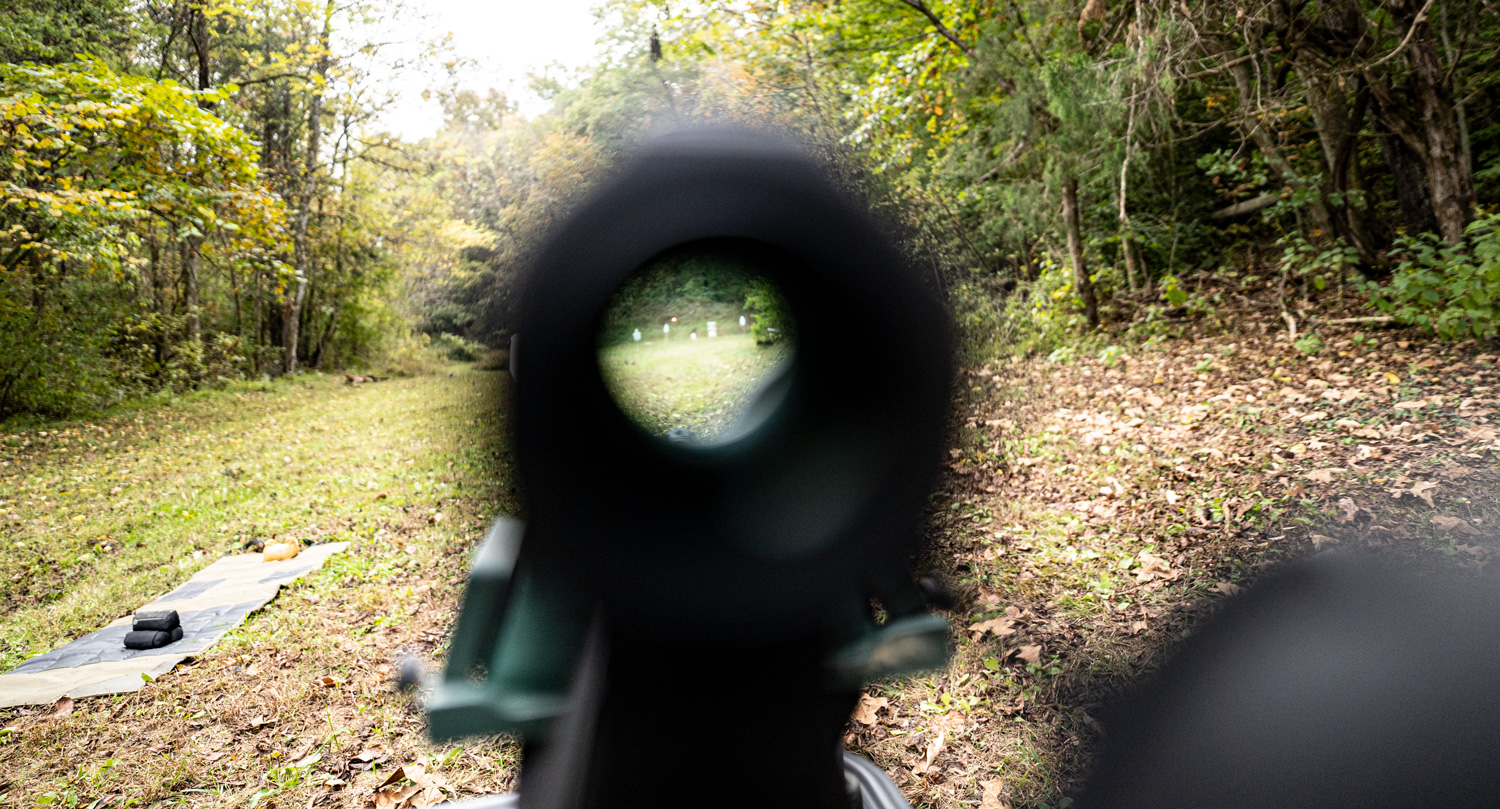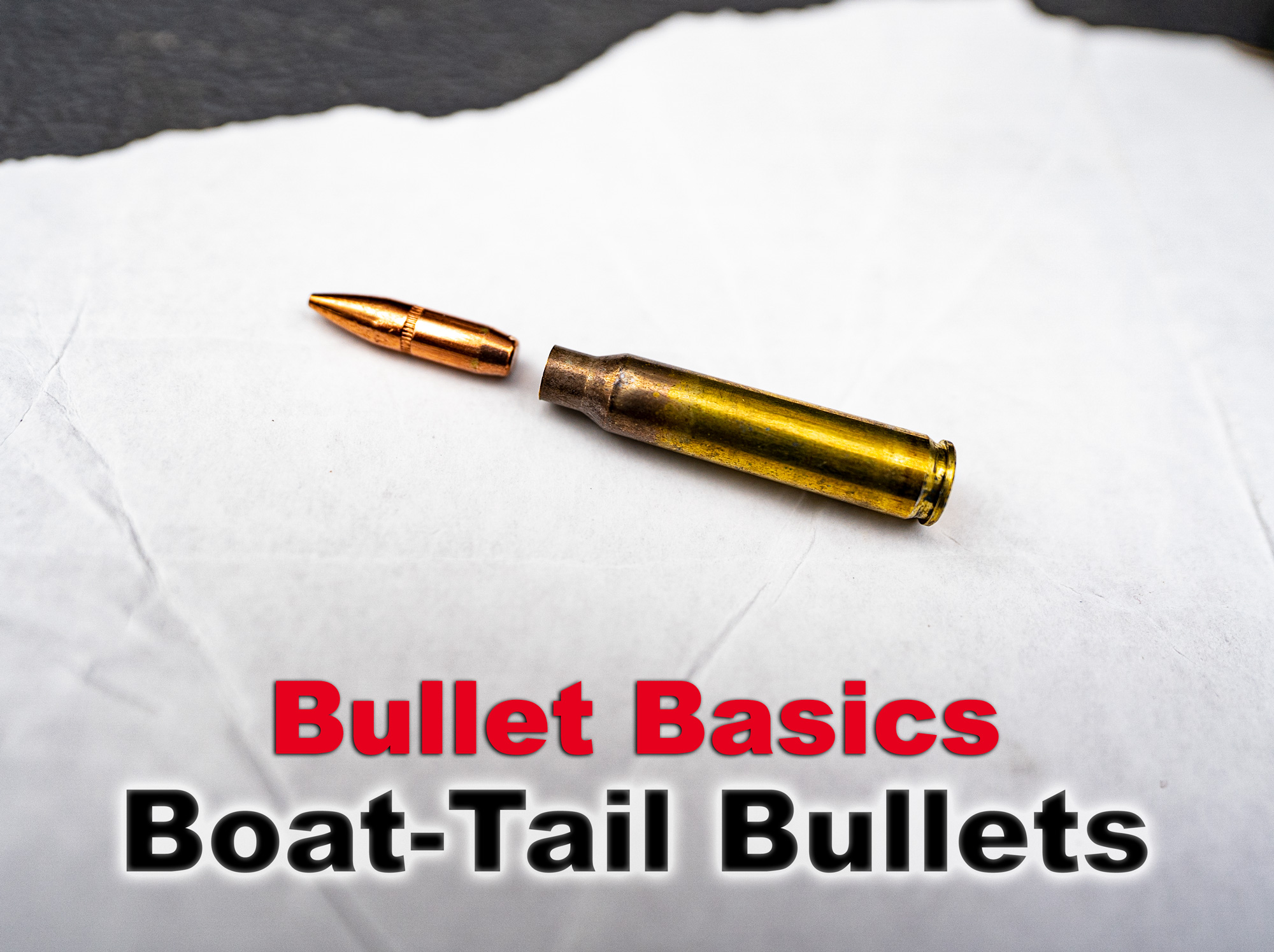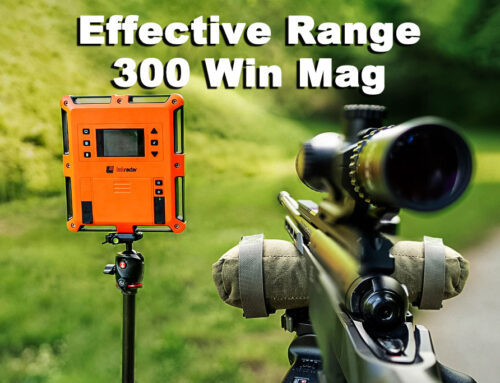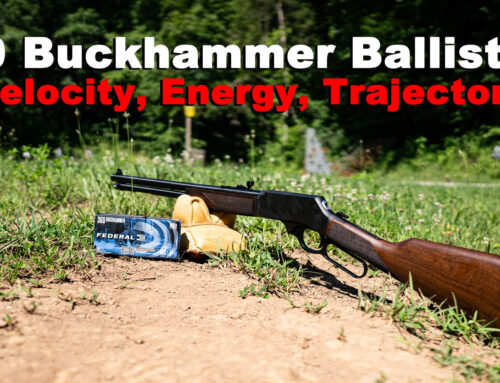You might not know what a boat tail is yet, but you may already have fired a bullet with one. Rifle ammunition doesn’t always mention its boat tail bullets on its box, and bottom of the bullet itself is concealed by the shell casing. So what is a boat tail, and why care about a feature you could completely ignore?
What is a Boat Tail Bullet?

A boat tail bullet (left) next to a flat base FMJ round.
Whereas a normal rifle bullet has straight sides that end in a flat base, a boat tail bullet has sides that taper inward toward the base. The “boat tail” name describes it well because it looks like the stern of a sailboat. That shape benefits a bullet in the same way that it does a boat: by reducing drag.
Advantages of Boat Tails

A boat tail raises a bullet’s ballistic coefficient. That’s essentially a number that reflects how well an object overcomes air resistance.
A bullet with a high ballistic coefficient offers four key advantages:
1. Flatter trajectory
2. Higher velocity downrange
3. Greater energy downrange
4. Less susceptibility to wind interference
Because the feature makes a bullet a little more accurate at long range, it is only found in rifle rounds.
Common Boat Tail Ammo Types
There are three common types of boat tail bullets:
● Range Training: The full metal jacket boat tail (FMJBT) bullet is commonly used for target practice. It’s in every sense a classic bullet with a gilding metal jacket over a lead core that is exposed at the base — with the addition of a boat tail for better accuracy.
● Competitive Shooting: Hollow point boat tail (HPBT) and open tip match (OTM) bullets tend to confuse people. That’s because they have a nose cavity, which is typically a feature that lets a bullet expand during penetration. An HPBT or OTM only has a nose cavity because its core was poured in through that opening while it was still molten. This process not only creates a more uniform boat tail than an FMJBT, but also an evenly distributed core for greater rotational stability.
● Hunting: The soft point boat tail (SPBT) bullet deforms and tumbles during penetration just like any other soft point should. Plastic-tipped hunting bullets, such as Nosler’s Ballistic Tip, often include boat tails but do not indicate as much in their brand names.
When rifle ammunition does show that it has boat tail bullets on its box, it’s to advertise that it offers better accuracy. If you see a rifle round with the word “Match” on its box, you can assume it has one.
This sums it up: Boat tails streamline a bullet so it can deliver a little better accuracy. If you’re setting out to become a long range shooter, the boat tail will give you an edge as you’re setting your sights on distant targets.





Good writing. Clear and concise. I appreciate it.
Super informative. Didn’t know exactly know what a BT was. cant find 22 Hornet any where. any ideas?